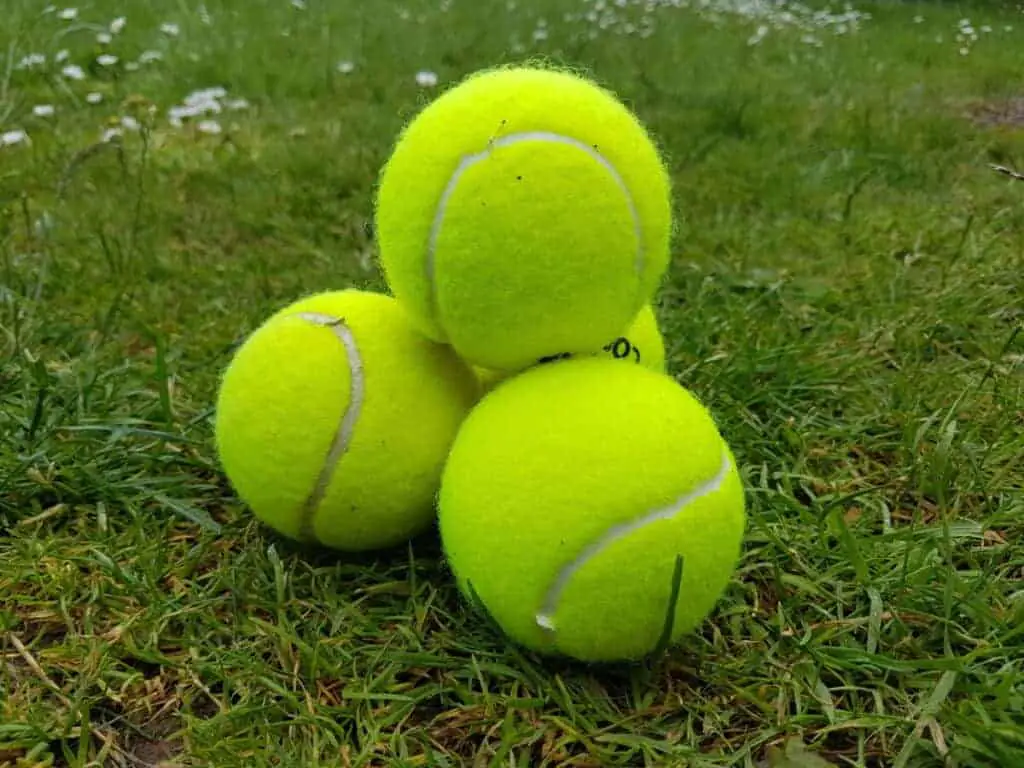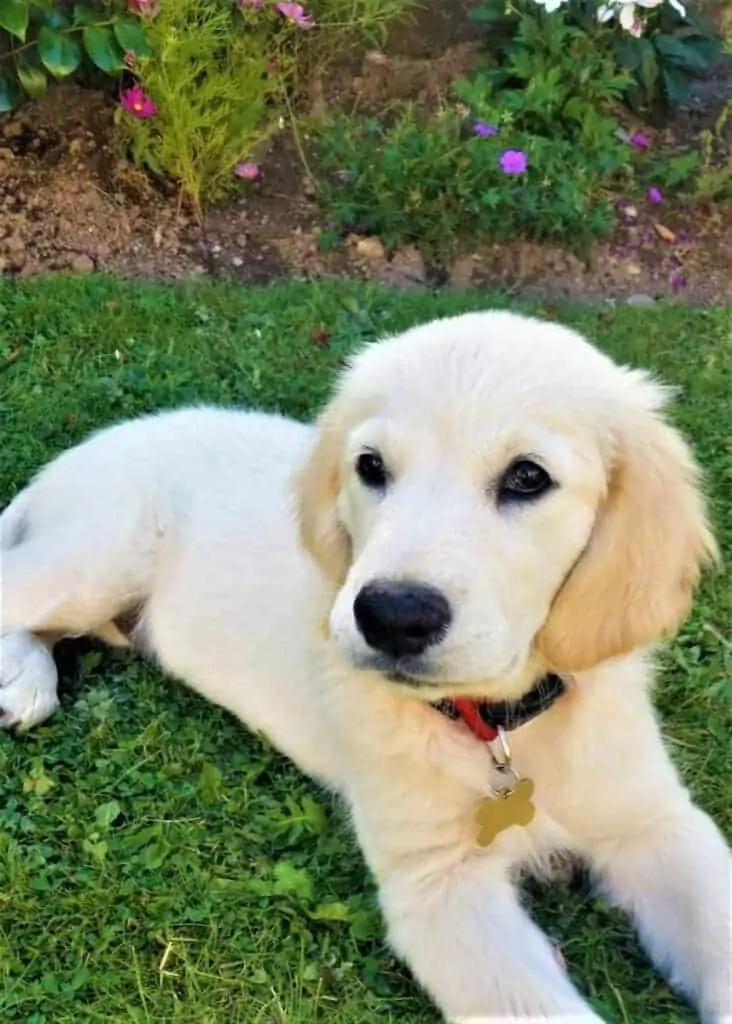Contents
Working From Home With a Puppy
After a long day working from home, the end is nearly in sight. All you are waiting for is one last important phone call, and then you can call it a day. The phone rings, and as soon as you pick up the receiver, the person’s voice on the other end of the phone is accompanied by the barking and yelping of your new puppy. Not the best impression to give to what could have been a very important client or business associate.
A barking dog is just one of the many obstacles you will have to overcome if you are working from home and looking after a puppy at the same time. Preparation and routine are two things that can make your day run smoothly and ensure both yourself and your puppy have a more productive and comfortable day.
So, whether circumstances dictate that you have to work from home or it is something that you regularly do, and you also have a puppy to tend to, let us look at eight ways that can make the day go without a hitch so you and your young dog can both share a more harmonious working day.
1) Routine.
If you want to avoid a chaotic and disruptive working environment, it’s essential that you create a routine for your puppy to follow when working from home. Dogs like routine as they gain comfort from it. The difference here is because of work commitments a more random and varied routine needs to be implemented. It’s unlikely any day will be the same, and your puppy needs to understand this.
Try to keep feeding times close to routine as possible but such things as walks, playtime, and cuddles will have to be taken at a time that permits. There are going to be occasions when you are snowed under with work, and undoubtedly there will be times when you have very little going on, at which point you can spend time with your puppy. The sooner your pooch gets used to this varied routine, the less likely it is that the important phone call will be met with a barrage of barking.
Use your spare time wisely, and don’t put interaction time with your puppy off in the belief that another moment will present itself later in the day. If you know for sure that you have half an hour or so to spare where you won’t be working, use it. Take your puppy for a short walk, give him some fuss, or just let him out to do his business. Speaking of bathroom visits, it would be great if your young dog had access to a safe outside area so he can relieve himself when nature calls. This isn’t always possible, so any lulls in work should be used to allow your puppy outside if you want to avoid too many accidents. Here is a great article on toilet training your new puppy – How To Potty Train Puppies
2) Puppy Free Workspace.
You will need to create your own workspace and one which your puppy realizes they should keep away from. If you begin to let your dog sit on your lap while making a phone call, they will likely expect this every time the phone rings. As nearly all remote work involves computers of some sort, which means wires, it also makes sense due to the inquisitive nature, and the chewing stages puppies go through. You could easily have a dog running down the hall with a keyboard attached to its hind legs, or worse, your puppy could get the shock of his life, literally.
Of course, your puppy will need their own space too. Make this as comfortable as possible, and make sure there are plenty of toys to keep them occupied. The puppy space could be in the same room, a separate room, or even a crate. Crate training is a very effective way of instilling a routine into a dog, especially those left unattended for periods of time. This method will also ensure you can get on with your work when those busy periods come around. If you are leaving your puppy in a separate room, perhaps consider moving any items that may get eaten or even invest in a camera so you can keep one eye on your pup.
3) Interactive Toys
Toys are a great way of keeping your dog occupied while you’re busy working. But because puppies get bored very quickly, you should supply them with toys that will not only entertain them but also stimulate them. Interactive toys and even puzzle toys will ensure your puppy is kept occupied for longer and is less likely to infringe on your workspace and disrupt your busy schedule. Some of these toys have hidden compartments where you can place dog treats for your puppy to find and happily chew away on.
Using his sense of smell to find the tasty treat and his brain to relieve it from the toy ensures your puppy is stimulated while your time is taken up with your workload. One of the most common and popular interactive dog toys is Kong. This toy, which also doubles as a puzzle, allows for a host of treats such as kibble, dog meat, and even dog-safe peanut butter to be stuffed inside for your puppy to dig out. If you don’t have any such toys hiding treats around the room will also help stimulate your puppy’s brain, make sure you don’t give them an easy run, remember a dog’s sense of smell is extremely good and they will find obvious treats quickly. Check out this article “Understanding Your Dogs Nose” for more information on your dog’s incredible sense of smell.

4) Preparation.
Not only is exercise vitally important for puppies and adult dogs, but it should also be part of our everyday lives if we want to maintain a healthy and active lifestyle. So, before the working day begins, it would be a good idea to get out there in the fresh air and set both yourself and your puppy up for the day.
This is an excellent way of relieving any doggy stress, and of course, a puppy that has just been for a nice long walk is more likely to take a snooze when he gets back home, allowing you to get on with your work in peace. If your remote working allows for designated lunch breaks, of course, use that time for walkies too. Just make sure you give yourself enough time to eat and rest as any stress you feel will be picked up quite quickly by your puppy.
Try to break the weekday exercise routine on the weekend by taking your puppy to different places for his walks. Get them in the car and drive to the park, the beach or visit the countryside. Anywhere different will benefit both you and your puppy both physically and mentally. If you have friends who are also dog owners, it would be a good idea to get together on the weekend and walk with each other, a sort of doggy playdate. Not only is this excellent training for your puppy by teaching him how to get along with other dogs, but it also makes for a tired and happy puppy, which can only lead to one thing an obedient dog.
5) Let Your Puppy See the Mailman.
One thing that is sure to trigger any puppies barking is the sound of a letterbox clattering. Not only will you have to put up with frenzied barking when your letters drop through your door, but you may also end up with a check from one of your clients or any other important letter chewed to pieces in the process. This is just your dog’s way of protecting his territory. The fact that the postman drops the letters and then leaves is a sign to the dog that he has accomplished what he set out to do, making the intruder go away.
The last scenario you need while working from home is for these letters to drop onto your floor while you’re busy taking an important phone call. It’s unlikely you’re going to hear much of what’s being said on the other end of the line when you’re puppy is going crazy trying to grab the mail. And when you do eventually pick it up, it’s doubtful whether it will resemble anything like what first came through the letterbox.
Your puppy only sees one side of the act. Let him see the mailman carrying out his duty. Introduce him to your friendly mailman. Let them fuss with each other. By doing this, your dog will begin to understand that those letters dropping onto the mat in the morning are of no threat, and he will start to take little or no notice of them at all. Giving you peace and quiet as well as intact letters. In addition to this, you can always stop your letters from being pushed through the letterbox by introducing an external wall-mounted box for any mail that comes. This way your puppy will not be able to get hold of the mail and destroy it.
6) Puppy Proof Your Home.
Cute, cuddly, loveable, and clumsy, are just a few of the many ways we describe puppies But remember, behind those adorable puppy eyes, there lurks a tyrant who is ready to destroy your house as soon as your back is turned. Okay, maybe not a tyrant, but most puppies will instinctively start chewing up items around the house given half a chance, so it’s always a good idea to minimize this happening by puppy-proofing your home. Do this first, and you’re less likely to be met with a half-eaten slipper in the morning or a gaping hole in one of your cushions.
Keep floors and surfaces clean of any food as not doing so will only lead to your dog instinctively sniffing around, and he could end up eating something that is not suitable or, worse poisonous and toxic to dogs. This also applies to toys left around if you have any children. Make sure any such items are safely put away. A chewy dog toy is one thing, a piece of lego lodged in the back of your puppy’s throat is another.
There will be individual rooms in your house that you don’t want your puppy to have access to. If this is the case, you can shut the doors to these rooms, or if this is not possible, use a stair gate to block access. Other things to consider are making sure you use sturdy cord covers on any cables or employing a deterrent spray to avoid accidental shock. Keep your trash under wraps to prevent your kitchen or any other room from resembling a landfill site, and make sure if you do have any plants around that are toxic to animals that they are well out of reach of your puppy.
Having a puppy-safe home is important so that you can leave your puppy alone without a worry. the same notion goes for your garden, so keeping your garden puppy safe will allow you to let them out for the toilet without worry, or even to play around on the grass. Check out our article on “How to Puppy Proof your Garden” for some great expert advice.

7) A Friendly Helping Hand.
Of course, you may be one of the lucky ones who have family or friends that can help out with keeping your puppy entertained and exercised when you’re busy working from home. This is great but try to keep the routine varied. You wouldn’t want your helping hand to arrive at the same time every day or take your puppy for a walk at precisely the same hour each time. Your help may not always be there, so it wouldn’t be a good idea for your dog to rely on it.
Hiring a dog walker can be a good option when working from home with a puppy. Although it is important to understand that your puppy’s exercise levels will be determined by their age. On average puppies can be walked for around 5 minutes per month of age. This is to ensure they are not over-exercised as this can lead to joint problems in the future. It is also important to understand how much exercise your puppy has had at home, if they have been running around the garden then taking them out for a walk might not add up.
8) Finally. You’re the Boss.
You know this, but your puppy may well think otherwise if you give in to his demands. If your intention is for a stress-free and productive day working from home, your puppy needs to know from the outset who is boss. If your puppy has been told to stay out of the room you are working in and suddenly starts to cry and begin batting at the door, the simple solution would be to open it and give your dog love and attention.
Do this, and there will be no doubt in your dog’s mind who is boss in your home and workplace, and it’s not you. Please don’t give in to his demands. The more you stick to your guns, the quicker your little ball of fluff will realize it’s you and not him who rules the roost in your house.
This can be a confusing process to negotiate as you will need to ensure your puppy is not asking to go to the toilet. Mixing this firm hand training with toilet training often does not work out. If your need to do both at the same time then I would suggest taking your puppy outside for the toilet regularly, this will help you to know they are not needing to go out.
Conclusion.
Working from home is not everyone’s idea of fun. Add a puppy to the equation, and it could well put some people off the idea altogether. Having a puppy for the company while you remote work shouldn’t have caused you or your dog any stress and anxiety as long as you follow some simple rules and prepare for your day ahead. Homeworking has its disadvantages, one being you don’t interact with your work colleagues and friends. Then again, working from home with a puppy in tow could well mean you’ll be working with the most loyal friend you’ll ever have.

